Introduction – Elevate your Stress Analysis Workflow
Over the years, the engineering landscape has evolved, and so have the tools that drive innovation. Whether you’ve relied on CAESAR II for decades or explored newer solutions, the quest for efficiency, precision, and user-friendly design never ends.
This article highlights how PASS/START-PROF offers cutting-edge features to complement modern engineering needs while respecting the legacy of existing tools. Let’s explore how it streamlines workflows, reduces costs, and empowers teams to achieve more.
If you are using your actual tools since years, you surely spent time and money in procedures and training. We surely have solutions for you to save most of your investment.
CAESAR II has long been a trusted tool in stress analysis, and PASS/START-PROF builds on that foundation with modern enhancements. Our verification manual confirms alignment with industry standards while introducing innovations like automated checks and advanced modeling
This document is available on request.
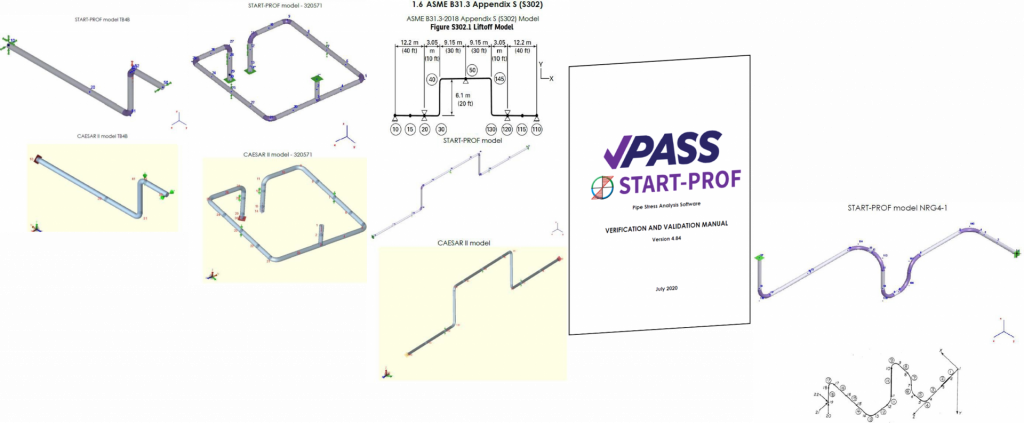
Reason 1 – Intuitive Interface & Automated Reporting
Streamlined Workflow
Checking the results of your calculation is complicated, everything must be checked manually: piping stress, support loads, expansion joint deformations. CAESAR II just shows you the bare numbers, you must be an expert to understand it. You need to check support loads manually, calculate expansion joint deformations and compare them with allowable manually.
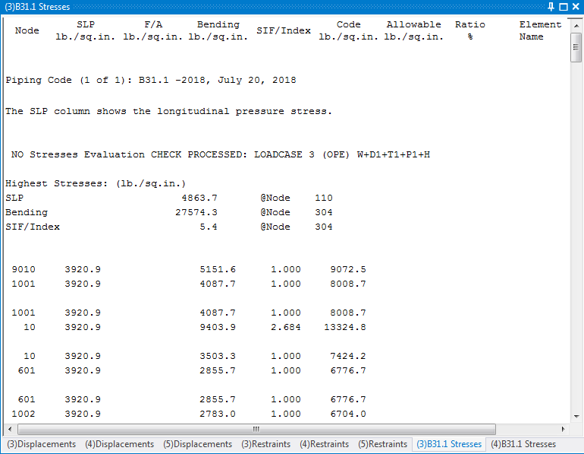
PASS/START-PROF’s user-friendly design allows both beginners and experts to create 3D models effortlessly. With one-click analysis, the software flags potential issues and auto-generates comprehensive reports.
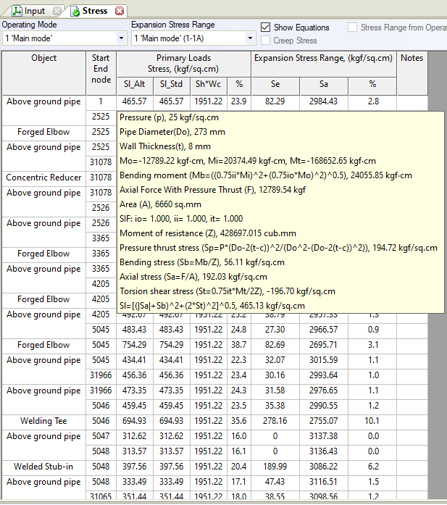
Smart Alerts
CAESAR II has just traditional error checker. No smart warning.
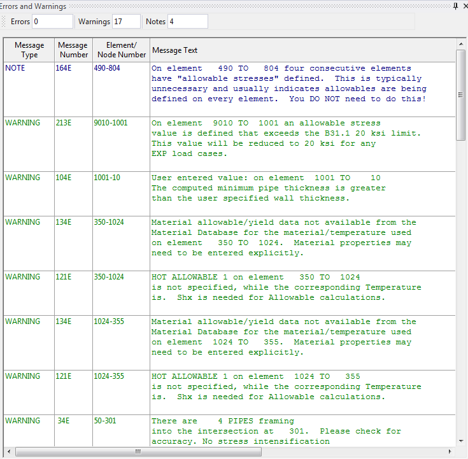
With START-PROF, stress checks, support loads, flange leakage, and buckling analysis are automated, with results highlighted for quick review.

Reason 2 – Effortless Load Case Management
Auto-Generated Load Cases: Simplify wind, seismic, snow, and ice analyses with automated load case creation, minimizing manual input and errors

Reason 3 – Advanced Buried Pipeline Modeling
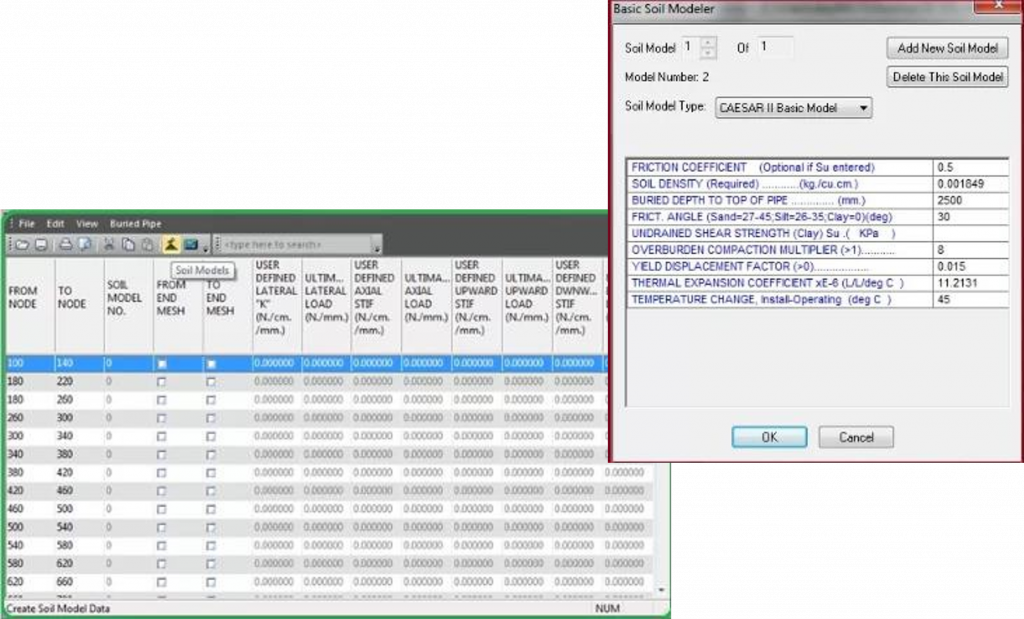
With CAESAR II, buried piping modeling is very complex. Every time after changing of the model, a user needs to load previously saved file, edit the model and run “underground pipe modeler” again. The module soil modeler is separated from the input model so the user must be careful about any change done in the input model and run again the soil modeler. No soil database. No automatic buoyancy loads application, submerged soil properties calculation.
Seamless Integration into START-PROF: Model above-ground and buried pipelines in a single project. Select soil types from a built-in database, and let the software handle buoyancy, submerged properties, and seismic wave propagation.

START-PROF has two layer model:
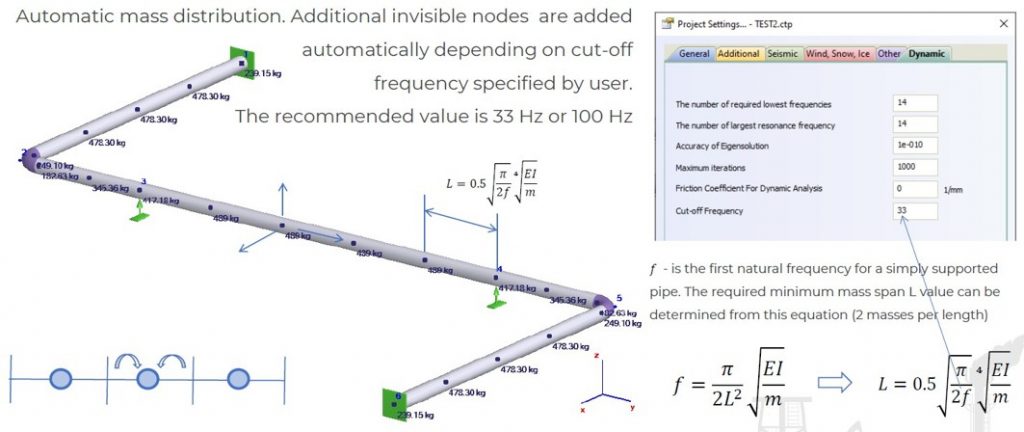
First layer is geometric model that you see Second hidden layer is automatically generated advanced finite element model:
- Added intermediate nodes
- Added soil springs
- Added intermediate masses
- Added complex tee models with flexibilities
- Added movements for equipment elements
- Added intermediate masses for modal analysis
- etc.
Advanced model is generated automatically each time you run the analysis based on your geometric model.
With CAESAR II, it is hard to model above ground and underground pipes simultaneously in one model. With START-PROF, Buried piping, Above Ground piping can be modeled in one model. You can model Horizontal, Vertical, and Inclined piped.


Moreover, with START-PROF Submerged pipeline can be modeled with ballasting.
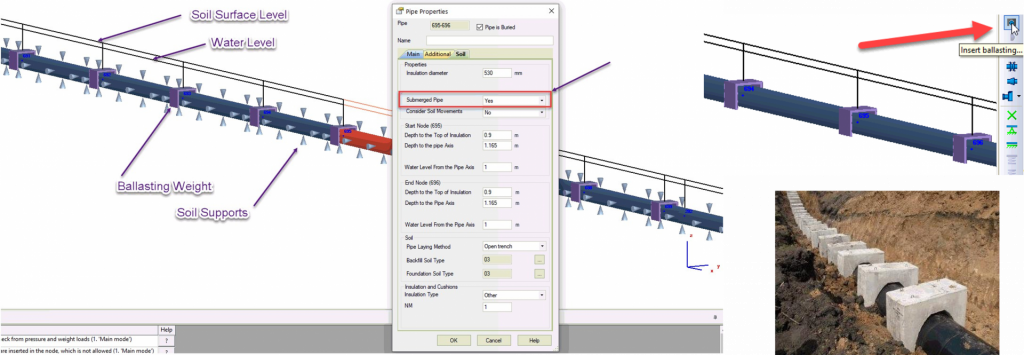
Reason 4 – Snow & Ice Load Generation, Seismic Wave Propagation
With CAESAR II, the automatic generation of snow and ice loads is absent and the seismic wave propagation is not supported. Fortunately. it is not the case with START-PROF.
Snow & Ice Load Generation
Automatic snow and ice load generation according to national codes.
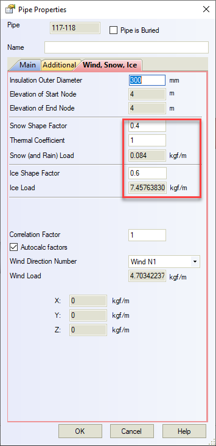
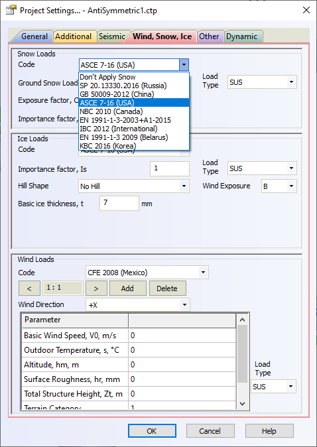
Seismic Wave Propagation
Seismic wave propagation analysis for underground pipelines. START-PROF calculates stress and strain in buried pipeline caused by seismic wave propagation, and checks the stress and strain limits according to ASCE 2001 Guidelines for the Design of Buried Steel Pipe (American Lifelines Alliance).
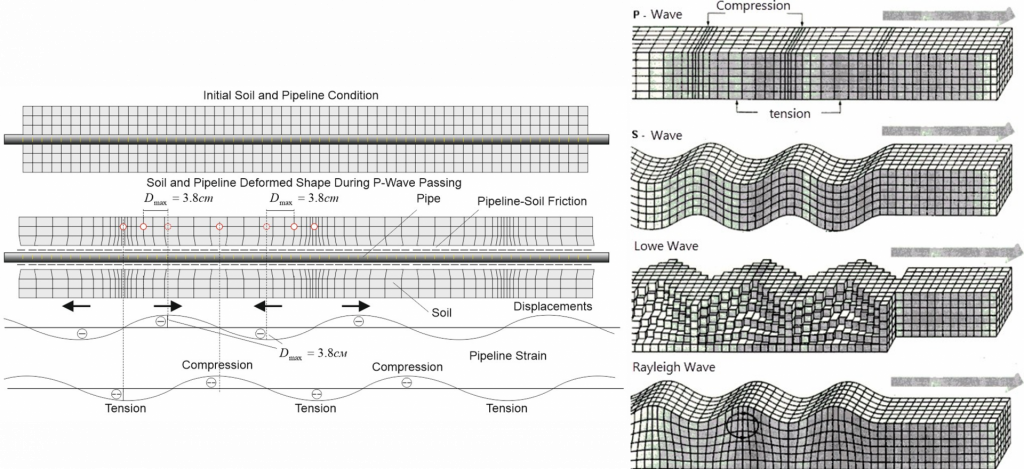
Landslide, Soil subsidence, frost heaving, Permanent ground deformation (seismic fault crossing) can also be modeled. The pipeline strain check is made according to ASCE 2001 (ALA) and GB 50470.
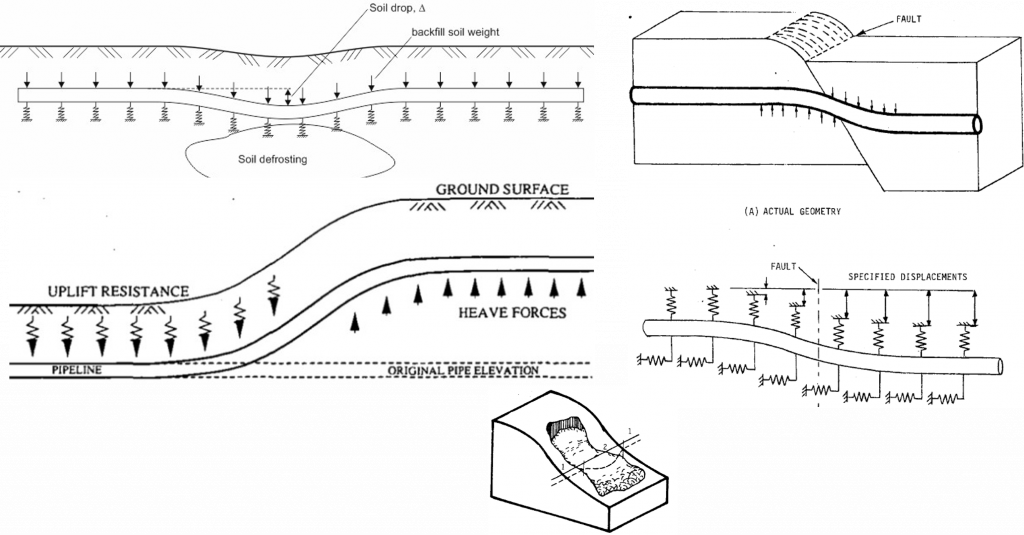
Reason 5 – HDPE & Composite Piping Made Simple
Impossible or complex with CAESAR II
HDPE piping analysis is not supported. FRP/GRP/GRE piping modeling is too complex in CAESAR II. No material database. All material properties must be specified for each pipe manually.
Very easy with START-PROF
START-PROF Can easily model HDPE and other thermoplastic material piping, has plastic material.
FRP/GRP/GRE piping modeling is very easy. Just select appropriate code and select the material from database.
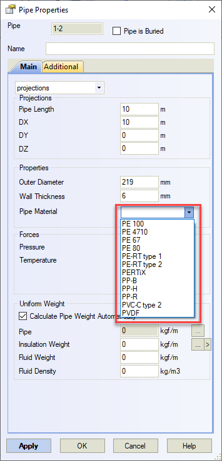

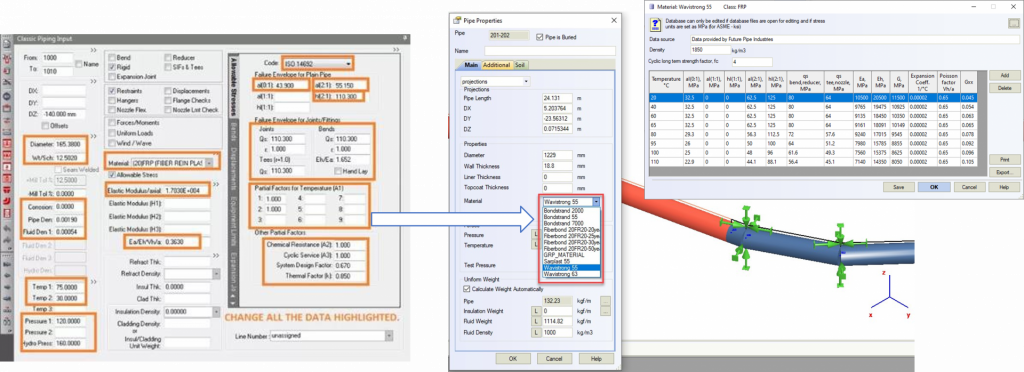
Access pre-loaded codes and materials for HDPE, FRP, GRP, and GRE piping, reducing setup time and ensuring compliance.
Reason 6 – Integrated FEM for Precision
PASS/START-PROF and PASS/NOZZLE-FEM is free integration module that allows to use the finite element method analysis with shell elements to calculate the stress intensification factor (SIF) and flexibility k-factors, allowable loads on nozzles and analyze stresses in critical elements using FEA. Using this module allows to overcome the application limits of code and calculate the SIF, k, and allowable loads more accurately and less conservative which save the metal volume and reduce the piping cost.
PASS/NOZZLE-FEM software must be installed on the same machine with PASS/START-PROF. In this case PASS/NOZZLE-FEM will use license from PASS/START-PROF dongle. PASS/START-PROF will run and communicate with PASS/NOZZLE-FEM software automatically.
More details here.
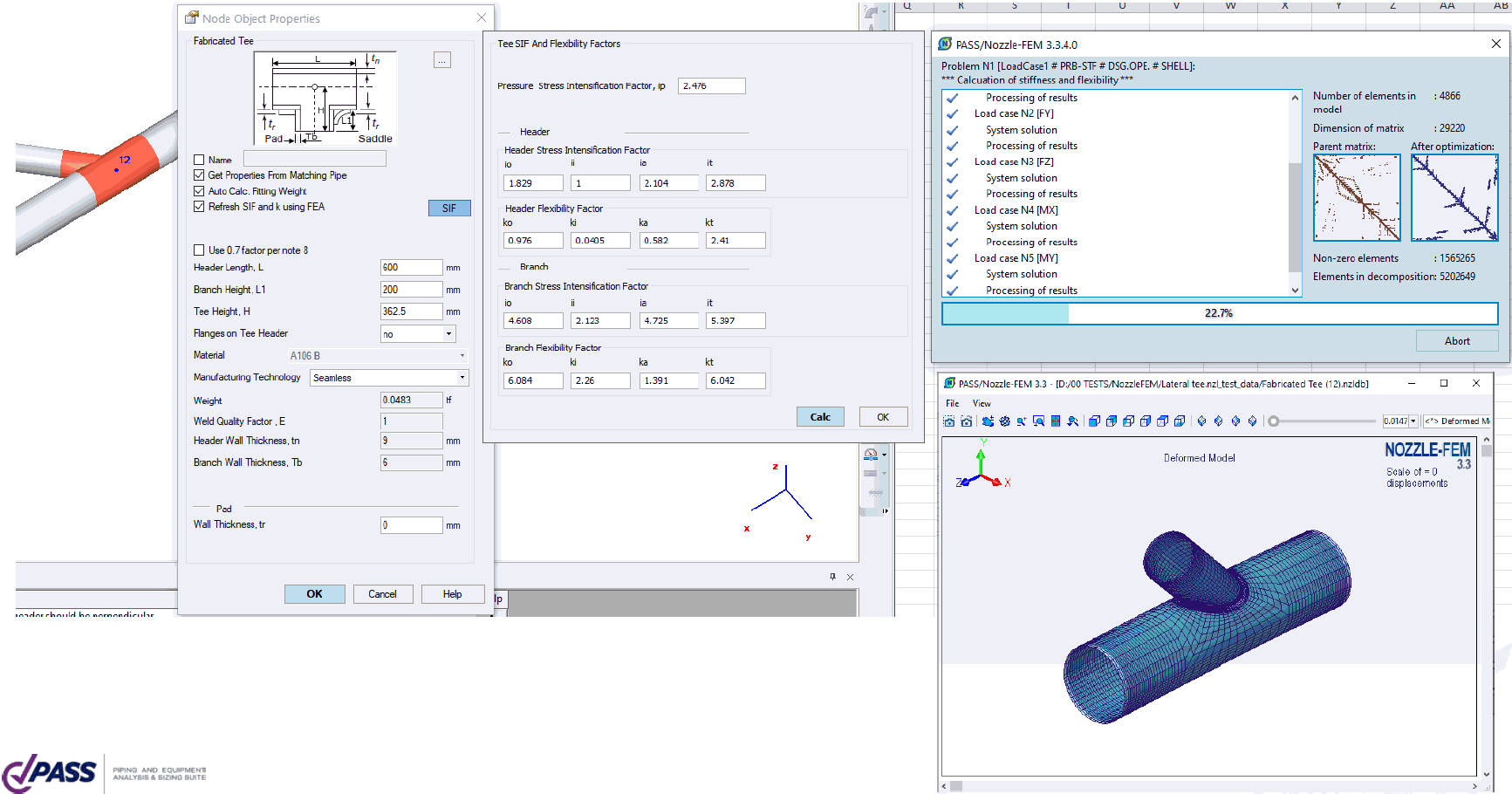
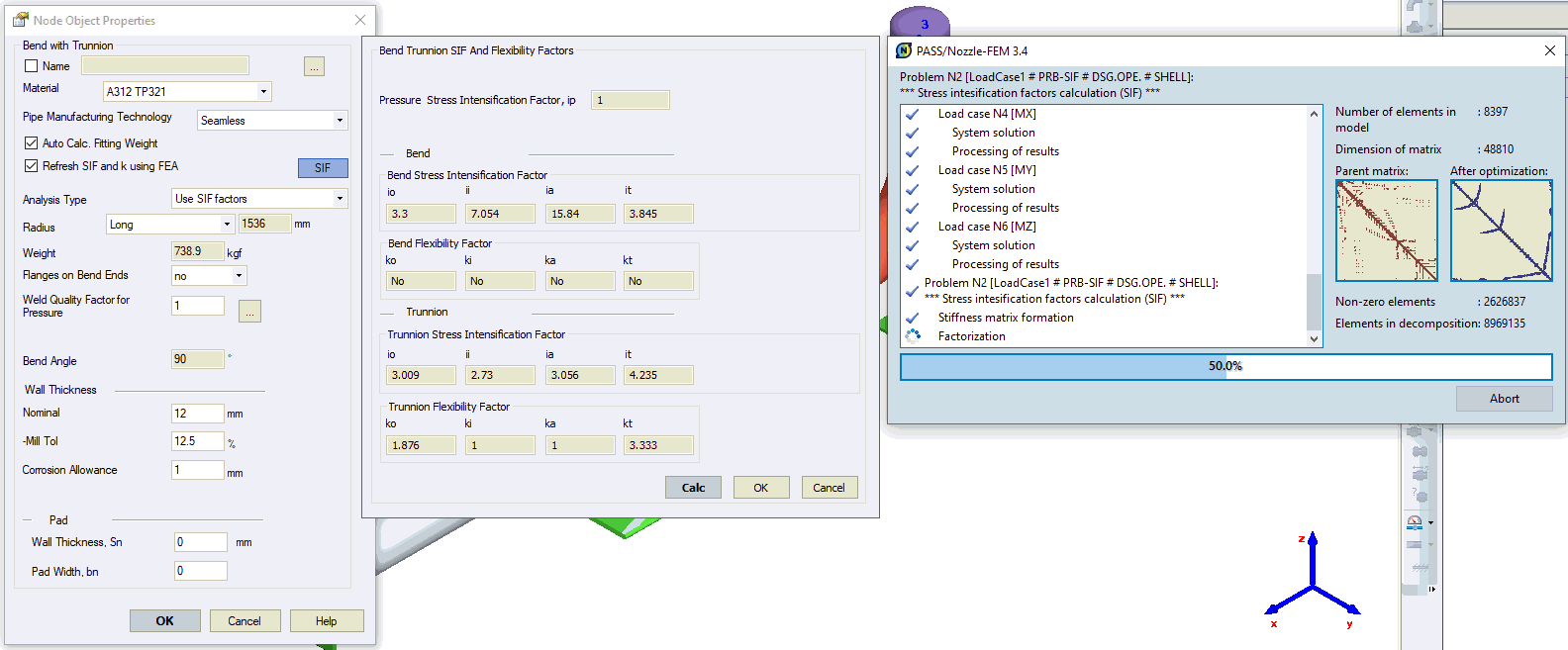
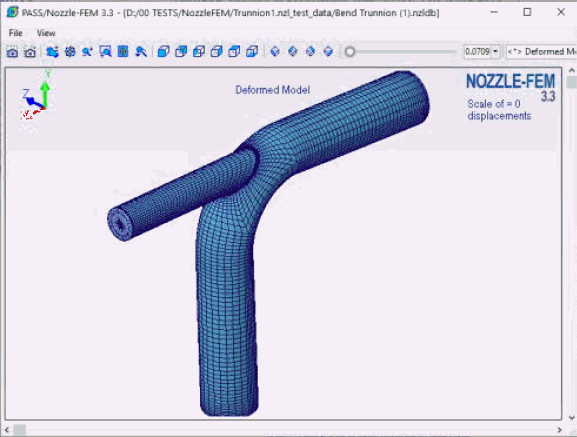
Reason 7 – Seamless CAD/BIM Integration
Does Caesar II have a fully automated function to directly convert piping geometry, bypassing data re-entry errors and compressing the time required for such a conversion from hours to minutes compared to manual ‘measure and re-enter’ approaches.
Is it working without any difficulties?
Start-prof has numerous interfaces with design and analysis software (see below).
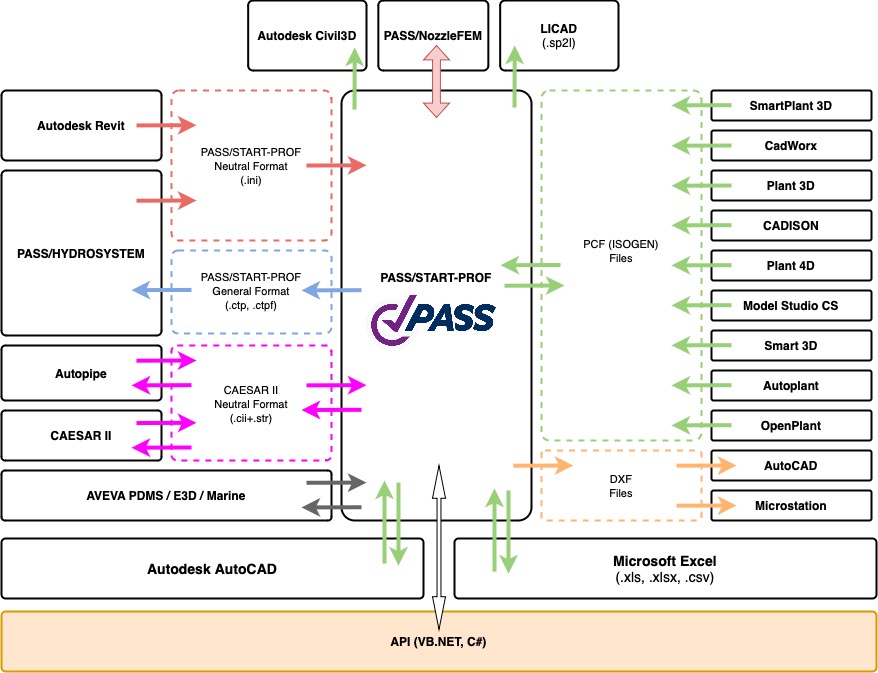
Moreover, the Revit-PASS integration system allows you to accurately transfer the geometry of the pipeline and attributive information from the BIM design system to the system for calculating flow rate, pressure and temperature distribution.
Data exchange is implemented through an open format, which makes it possible to divide the roles of users in the project and optimize the organization’s budget by using only the necessary products.
Using the Revit-PASS integration system and other PASS integration capabilities will allow design organizations to effectively organize the design of industrial facilities due to a significant reduction in the time required for re-entering data. In addition, the use of the integration system when CAD tool and PASS are used together excludes the possibility of errors associated with manual data entry into the calculation model.
Please also notice that import from DXF is smart, i.e. the software recognize pipes, elbows, valves in DXF file geometry, and import them accordingly.
We also have a privileged relationship with our partner ESAin and its CAD system ESApro.
Start-prof also allows import from and export to CAESAR II
Reason 8 – Dynamic Fluid Analysis Linking
Directly integrate results from PASS/Hydrosystem for transient force analysis,
ensuring accurate stress evaluations in complex scenarios
You probably have an accurate tool for water hammer analysis, but does it have the ability to automatically calculate and easily export this data as a time history plot to your stress analysis tools?
You may perhaps export a hydrodynamic force time history plot for use in Intergraph CAESAR II.
PASS/Hydrosystem is of course linked to HEXAGON CAESAR II but also the present software from the PASS suite: Start-prof.
It can be used to simulate stress behavior from Hydrosystem results like in the waterhammer example below. Unbalanced waterhammer induced forces on appropriate elements/nodes are calculated and transferred to PASS/START-PROF or other piping stress analysis programs.
Moreover, slug flow parameters (size, frequency, speed of slugs, etc.) for gas-liquid flow can be calculated and reported using TUFFP Unified model. Forces in elbows and flow-turns caused by gas-liquid slug flow are calculated and can be exported to PASS/START-PROF software for accounting them in piping stress analysis.
Hydrosystem implements the classical method of characteristics (MOC), using Riemann invariants and explicit numerical methods. It also considers possible cavitation during transitional flow, considering both, column separation effect and distributed vaporous cavitation.
Reason 9 – Cost-Effective Licensing
How much money did you invest into your actual tool?
- Did you opt for annual subscription, or did you purchase the software and pay an annual M&S contract?
- Did you really have support and new releases?
- What was your internal investment?
How much did you continue to pay each year for your actual tool?
- START-PROF provides various configurations of piping stress analysis according to global or all standards for District Heating, Power Generation, Process, Oil and gas or all industries.
- Minimum START-PROF local annual license is starting at 2 600 US$ and the complete perpetual network license price is 16 200 US$
Is START-PROF cheaper than your actual CAESAR II Configuration?
We are at your disposal for a detailed quote based on your needs.
Reason 10 – Global Support & Continuous Innovation
Your actual stress analysis tool CAESAR II was accepted and approved during over 30 years, well known software as the industry standard in America, Asia, Europe.
But what is the situation now?
Your tool was acquired by one of the large groups selling simulation tools.
Now part of a large group, the support is depending on the knowledge of the local representative (the former team is probably not present anymore) and the development is decided by the strategy of the group only. No more development or new capabilities for your tool.
Actively developed since 1965 and worldwide distributed since 2018, industry standard in Russia and CIS countries, translated into English, Spanish ,and Chinese languages, START-PROF has since evolved into one of most powerful stress analysis tools.
Founded in 1992, and currently one of leading IT companies, PSRE (Piping System Research & Engineering) Co. now develops START-PROF in interaction with leading world expert associations (AIChE DIERS, TUFFP and others). It is part of a complete solution (PASS software) for engineering of Piping Systems and related equipment including engineering consulting.
The program is under highly active permanent development and improvement, with priorities defined by the needs of existing and potential customers.
The worldwide distributors know very well the various capabilities of the software and are listening to customer requests. User feedback is accepted and used to improve development.
User can communicate directly with the developer team.
